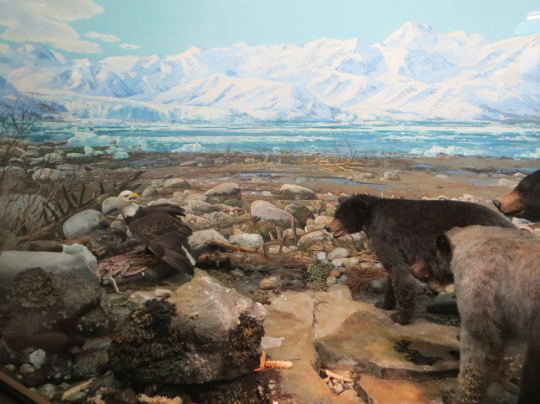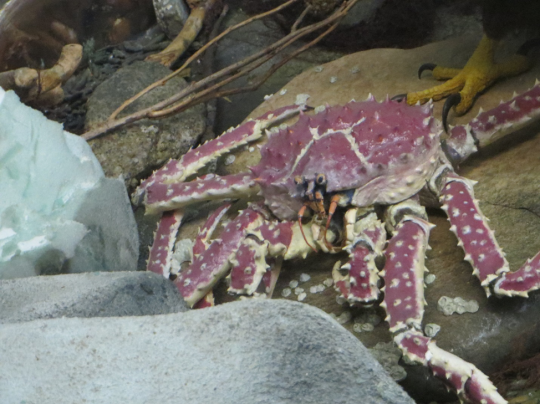By Patrick McShea

Some guided tours of We Are Nature begin outside the actual exhibit. A diorama in the Hall of North American Wildlife, for example, recently provided a challenging starting point for a handful of Carnegie Mellon University students. While facing a meticulously detailed scene from a remote section of Alaskan coast, they were invited to begin collective consideration of human impacts on the Earth.
“There’s no sign of people anywhere in this three-dimensional scene,” began their guide, “but imagine if you were in the scene, a safe distance away from the bears, the eagle, and the Alaskan King Crab. Imagine if you were facing out to sea. “

At the mention of the crab one of the students spoke-up. “Deadliest Catch,” she said,“the cable TV show about crab fishing. If we were in the scene and facing the ocean we might see a fishing boat, or the lights of a fishing boat!”
The connection shifted conversation to the scale and reach of commercial fishing, leading to recognition that the tasty long-legged crabs, which provoke the diorama’s bird versus bears confrontation, have long been available in Pittsburgh stores and restaurants. The resulting conversation about wild creatures as commercial commodities continued during the short walk from the diorama to the entry way of We Are Nature.
Patrick McShea works in the Education and Visitor Experience department of Carnegie Museum of Natural History. Museum employees are encouraged to blog about their unique experiences and knowledge gained from working at the museum.
